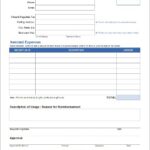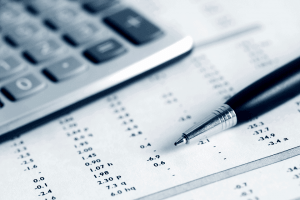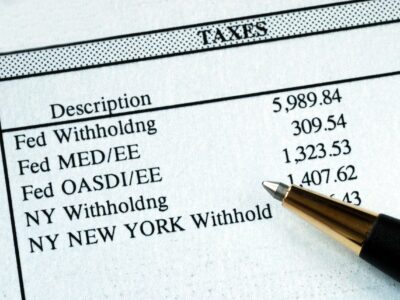
If you are registered for GST, or required to be, the goods and services you sell in Australia are generally taxable unless they are GST-free or input-taxed. If you are an individual purchasing goods from an overseas supplier, you won’t pay GST on any ‘low-value goods’. These are classified as any goods on which customs duty and taxes is A$50 or less and have a customs value of less than A$1,000. You can quickly calculate the GST you can claim through the TRS by using our online GST calculator. GST stands for “Goods and Services Tax”, and is a 10% tax applied to the sale of most goods, services, and items in Australia. When the approved grant sums are given, they do not include the Goods and Services Tax (GST).
- The advancements of technology and creation of a largely accessible digital marketplace allow Australians to both provide and access goods and services in a way unforeseen when GST was initially introduced.
- Once you have identified the applicable GST amount, multiply it by the current GST rate.
- If you’re considering bringing goods into Australia, the Goods and Services Tax (GST) that applies may vary.
- Businesses can claim GST credits by lodging a Business Activity Statement (BAS) with the Australian Taxation Office (ATO).
When to Register for GST in Australia?
Whether you’re a business owner calculating the GST on your products or a consumer trying to figure out how much you’re really paying, a GST calculator can be a valuable resource. To calculate the cost including GST, multiply the price excluding GST by 1.1, and to find the GST amount divide the price including GST by 11. Whether you’re a business owner or a consumer, our Australian GST calculator will help you make informed decisions and avoid any hidden costs included in the price. Get instant and accurate results with just a few clicks to add or subtract GST from a given amount. If you provide services or assets through a platform for a fee, you will need to consider how income tax what is a schedule c irs form and GST applies to your earnings. Businesses — including non-profit organisations and self-employed individuals — will be required to register for GST if they meet certain conditions listed below.
How To Calculate GST From Total Amount?

Stanley Bruen is a 9 features of quickbooks enterprise for retail businesses highly skilled professional chartered accountant and financial expert. He has a deep understanding of the Australian tax system and has become a trusted advisor for a wide range of clients, from small businesses to multinational corporations. His expertise makes him a pro at navigating the complexities of Australian taxes and VAT calculation, ensuring your finances are always in top shape. This means most goods and services sold, will have a 10% tax added to their price.
You also have the option to register for GST at the same time when you apply for an ABN. Simply select the situation that applies to you, input the amount, and then hit the “Calculate” button. Since its introduction, the total GST revenue in Australia has shot up by 130%, while the GDP has grown by 180%. This has led to a decrease in the GST-to-GDP ratio from 4.0% in 2003–04 to 3.3% in 2018–19.These figures highlight the importance of understanding and accurately calculating GST.
GST on imported goods for businesses and individuals
To calculate the GST, enter the amount in the price field & select Add GST or Subtract GST. Our GST Calculator will show you the GST amount at Australia’s 10% GST rate. If you are self-employed, a sole trader, or a tradie in Australia, you will need to register for GST if you earn more than A$75,000, or if you drive a taxi (regardless of how much you earn).
Up next in Work and tax
Businesses registered for GST can claim back the GST on goods and services purchased for business use. Businesses can claim GST credits by lodging a Business Activity Statement (BAS) with the Australian Taxation Office (ATO). First of all, you need to determine the total value of the goods or services for which GST is applicable. This contains the base price of the goods or services plus any additional charges such as delivery fees, packaging costs, or membership fees. GST refers to the goods and services tax (GST) It is a type of value-added tax (VAT), this is the most modern form of taxation that the Australian government has adopted and this is one of the lowest GST rates in the World.
This is useful if you need to check the individual GST amount on one unit (a single product or service) before adding it to the list of items in the GST table. Please note that the Australia Reverse GST Calculator is designed to allow you to toggle between quick and Detailed calculations without losing any data that you add to the Detailed GST Table. For example, if the base price of the product is $100, then the npa ratio definition total price including GST would be as follows.
The Current GST (Goods and Services Tax) rate in Australia is 10%, which means for every $100 worth of goods or services you purchase, you will have to pay an additional $10 in GST. Now, the GST amount is simply the amount that must be paid on the goods or services supplied, For example, if the total value of goods or services is $100, and the GST rate is 10%, then the GST amount would be $10. This new tax system was introduced by the then-Howard Liberal government in Australia in July 2000.GST is a broad-based tax applied to the value of most goods and services, we buy or sell. To work out the cost including GST, you multiply the amount exclusive of GST by 1.1. Before acting on any information, you should confirm the interest rates, fees, charges and product information with the provider.




